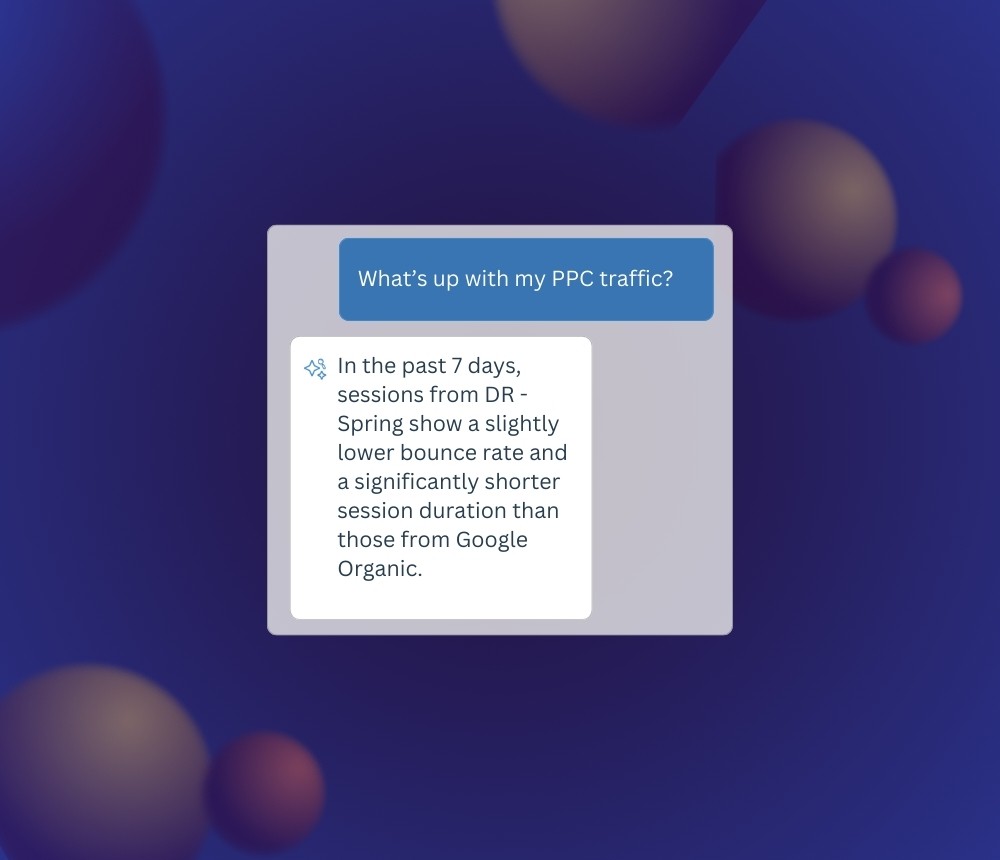Global Rug Retailer Makes Gain With Visitor Insights

Are your analytics tools falling short?
Resources like Google Analytics are great for gathering quantitative data and tracking activity on your website. You can see things like conversion rate, bounce rate and session duration for individual users on your site and analyze that data from different segments or traffic sources.
These numbers are extremely helpful in knowing what’s working and what’s not -- but by studying this information alone, you’ll be left guessing why things are performing this way.
What the numbers can’t tell you
What these data points can’t answer for you is “Why?”
Why are customers exiting from this page?
Why does this traffic source have a lower conversion rate?
Why are customers from this region spending less time on my site?
Quantitative data alone can’t tell you how users are interacting with your site—and for Miss Amara, an e-commerce Shopify site, this meant they needed another tool to compensate for the shortcomings of Google Analytics.
Lucky Orange fills the gaps
Lucky Orange Dynamic Heatmaps and Session Recordings help you answer questions about why visitors take certain actions on your website. Heatmaps and session recordings provide qualitative data for a deeper understanding of visitors and how they interact with your site. You can see where they clicked, scrolled, moved and tapped to determine what’s preventing them from converting.
Seeing this deep level of analysis is great, but how can it help you make sense of what you see in Google Analytics? Enter Lucky Orange customer, Miss Amara, who did just that in their search for clearer, more actionable data.
How Miss Amara uses Lucky Orange
Miss Amara is an online retailer that specializes in beautiful, one-of-a-kind rugs. Their mission is to change the rug-buying experience and make it truly magical with peace-of-mind free returns, free delivery and free professional styling advice. They started in Australia in 2014, but have since expanded to the U.S., Hong Kong and New Zealand.
Miss Amara’s expansion overseas led to some questions and challenges that data from Google Analytics couldn’t solve on its own.
“We needed to get real-time recordings and understand how users were interacting with the site, and what their barriers were,” said Jacob Dryer, Miss Amara, digital marketing manager.
Miss Amara found a solution with Lucky Orange filters for heatmaps and recordings. Filters allow Miss Amara to segment customers in different ways -- by traffic source, location, events, visited page, etc. -- to see how they are interacting on the website.
Why you should segment data
All customers are different. They’ll come from different places, make different decisions and behave differently on your site.
When you have a large amount of data, segmenting customers based on demographics, activities or traffic sources helps you be more strategic with the time you spend analyzing behavior. And since Google Analytics and Lucky Orange both offer powerful segmentation abilities, you can create and analyze data from the same segments across the two platforms.
If your data suggests that one segment is performing significantly worse than the others—but you don’t know why—watch recordings from that segment in Lucky Orange to see how these users behave on your site.
Filtering recordings can help you uncover website behavior patterns in different segments and provide insight as to why some customers convert more than others.
Segmenting in Lucky Orange is easy and flexible -- on the Visitors tab, click Filters -- from here, you can segment by different user criteria. Filter heatmaps and recordings by traffic source, device type, visit number, online status and more.
Miss Amara segmentation techniques
1. Traffic source
The Miss Amara team filters its website traffic by source to analyze how users are performing. From this, they found Facebook ad traffic, specifically from conversion campaigns, performed much better than other sources across metrics like pages per session and average time on site.
“While we could’ve gotten this information from Google Analytics, being able to validate this further with the corresponding recordings was a huge help,” said Dryer.
Filtering recordings to see only traffic from Facebook ads gives Miss Amara better insight as to why those users typically visit more pages and stay on their site longer. This qualitative analysis helps them make more informed decisions in regards to where money is spent trying to get customers on their site.
2. Location
After establishing themselves in the U.S. market, the Miss Amara team found it especially important to see how users were interacting with their site. When they started, U.S. visitors had a lower conversion rate hovering around the 0.4%-0.45%, in comparison to other more established markets where the conversion rate was closer to 1%. Miss Amara was interested in watching real visitor recordings to get a better understanding of where drop-off points were and what the barriers were for these users.
After reviewing the recordings, they found that people were dropping off on the shipping page and some people were struggling to find it at all - even typing "shipping" into the search box. Using this info Miss Amara made our Free Shipping page more visible on the product page, and on our shipping page they made much needed changes including providing a map of delivery estimates for different states as opposed to a generic 1-2 week time window.
After implementing some vital changes because of findings with Lucky Orange, Miss Amara was able to lift their conversion rate over 38% with U.S. visitors and the numbers continue to grow.
The location filter in Lucky Orange allows you to segment users by country, state/region and city for even more specific and in-depth analysis.
3. Events
Miss Amara’s team considers the ability to segment recordings with events a game changer.
This allows them to narrow visitors down to only those who have completed a certain activity or event on their site. For example, Miss Amara wanted to find out how only people who have added items to their cart but not checked out interacted with the site -- and filters allowed them to do so with ease.
Event-based segmentation helps provide a better understanding of specific actions taken in a customer journey and how that impacts the likelihood of a conversion or other positive outcome. These filters are extremely adaptable and can be used to segment customers in countless ways.
“The granularity and flexibility [of filters], along with recordings, makes it so much more powerful than just relying on Google Analytics,” said Dryer.
4. Visited page
Miss Amara’s team regularly watches recordings on product pages and category pages, as this is a key conversion area. They look out for patterns of behavior -- time on page, items clicked, how far they scroll, etc. -- and filtering based on users who visited a certain page helps them do so.
Watching recordings allowed Miss Amara to uncover a common barrier among users on product pages.
They noticed people visiting U.S. product pages would click on the shipping link and then exit the site from the shipping page. This told them they needed to make their shipping information clearer and include more context on the product page so people wouldn’t abandon their site.
With this insight in hand, Miss Amara’s team checked the impact of product page language by segmenting recordings to those who visited the updated version. From recordings, they developed a hypothesis, then re-visited the recordings to see how their change impacted conversions. It’s a full-cycle process that’s easily repeatable in your own business.
Need help finding out “why?”
Heatmaps, session recordings, and segmentation can provide information numbers can’t. And when it comes to optimizing your website, you need your tools to be equal parts powerful and easy to use.
Don’t rely exclusively on quantitative data -- unlock deeper insight with a 7-day free trial of Lucky Orange.
Cover photo from the Miss Amara Instagram account. Give them a follow!



